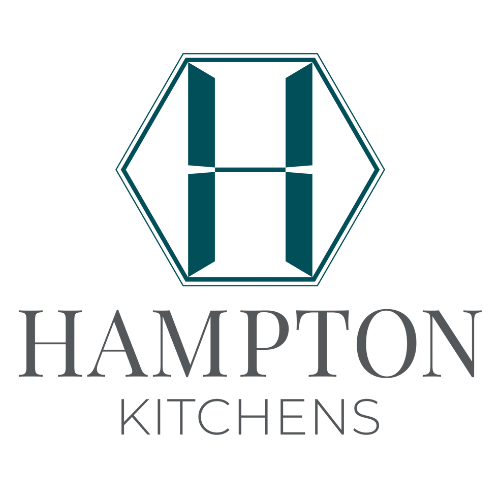Transitional kitchen design and the luxury market
Encountering luxury.
For well over 45 years in the design and build industry, I have been challenged to work with clients and others to create kitchens, baths, and other spaces that reflected various personalities and tastes in order to exceed expectations of the homeowners’ lifestyles. Admittedly, the luxurious lifestyles I began to encounter in my early years proved that I was working way out of my comfort zone. I had not seen or certainly had not experienced some of the fine options available to the more affluent parts of the industry. Despite my initial tentativeness, I never wavered, something was in my DNA that drove me to explore and research ideas and concepts that were then beyond my background and personal experiences. With much research and more knowledge under my belt, I embraced and flourished when I got the chance to work with the upper income demographic. My determination then launched my current passion that Hampton Kitchens is now well-known for specializing in: Luxury Kitchen Design and Build.
The luxury-seeking client.
Clients that come to us seeking a luxury kitchen renovation all generally aim for achieving two primary goals: premium and top of the line everything (including innovative appliances and entertainment featuring the latest technological advancements) and an extraordinarily unique living space. The exciting challenge for the kitchen designer when working with the affluent client, comes along with the latter requirement. Designing an entirely unique luxury living space. This is a challenge because oftentimes, when something is deemed as a ‘luxury (fill in the blank)’ it is quickly replicated.
Quickly replicated items usually tend to be sub-par and lack a certain quality standard or substance. We all know that feeling of dissatisfaction when experiencing a product or service that is touted to be as good as (fill in the blank with the top contender) and does not quite live up to the hype.
When I was younger, I experienced seeing something that I will never forget and now it reminds me of the quick product replication that causes a lack in quality that we see today. I was riding in the car staring out of the passenger window when I saw a regular ole Volkswagen Bug with the front end of a Rolls Royce welded to the Volkswagen’s body pass by.
In that memorable case, the point being conveyed was obvious and extremely humorous, yet in hindsight it is a powerful message that continues to remain ingrained in my memory. What of the knock-offs and instant replications that flood the residential construction market anytime a new and original product or item surfaces? The challenge for the client who has attained a station in life that they can afford to purchase experiences and products that are different and unique is to be able to do so without the purchase for such becoming obsolete quickly or getting copied to the point that there is a rapidly fading joy in the ownership of the product. Here is where the average income-earner can relate with the upper class. No matter the size of the budget a homeowner has, no one wants to see their home or kitchen duplicated just down the street.
What was old transitions into trending and is new again.
Where the term ‘transitional’ is concerned, I have found that it can mean a wide variety of ideas depending upon a person’s perspective. If you were to search the Internet for the term, you might find an answer stating something similar to transitional design being an interior design style that incorporates nostalgic elements and textures from the past with modern elements. It may also simply refer to a mixing of textures. Interestingly, there are other design terms with similar ambiguity, such as ‘contemporary,’ but that is another concept and separate article.
Back to transitional design. I have found that transitional design is a very interesting discussion topic to throw out at a design industry function as it produces lively conversations. I have heard many inconsistent and even conflicting perspectives regarding what transitional design means or might look like to various design contractors. This wide range of interpretations is exactly what makes transitional design an exciting challenge for designers and quite popular with affluent clientele. The style can withstand the test of time and simultaneously appease eclectic fashion tastes due to the fact that the term is so undefined. A transitional design allows for an entire spectrum of styles and textures at the fingertips of the designer; therefore the creative design possibilities, when in the proper hands, are limitless.
Experience luxury at Hampton Kitchens.
Top four transitional design elements for a luxury experience.
1. The highest in quality and modern-style surfaces and design elements.
Simple yet sophisticated furniture lines
Minimal accessories
Exquisite marble
Premium, custom cabinets and paneling
2. Textures and elements that have, what I like to call, a ‘throwback’ or nostalgic feel.
Farmhouse style sinks
Oversized drawer pulls
Weathered nickel and brass finished hardware
Live-edge wood countertops
3. Project customization and excellent client service experience.
A design that expertly reflects the client’s style preferences and personality
Design logistics and cabinetry tailored the client's space and functionality requirements
VIP style client experience and project delivery
4. Master-level design skills
Unique and creative design.
Expertly designed project layout
A keen and well-trained eye to provide the perfect mix of elements without going overboard
The true meaning of luxury, no matter the design style or term used to describe the style, is the culmination of exceptional client service experience, CMKBD design skills that combine premium products and well designed layouts that are customized according to client preferences, personality, and logistics.
How will you know if your designer is a highly-rated professional?
An industry recognized certification such as CMKBD, Certified Master Kitchen and Bath Designer is a great place to begin with on your search. Top Questions to Ask When Hiring a Design Expert





